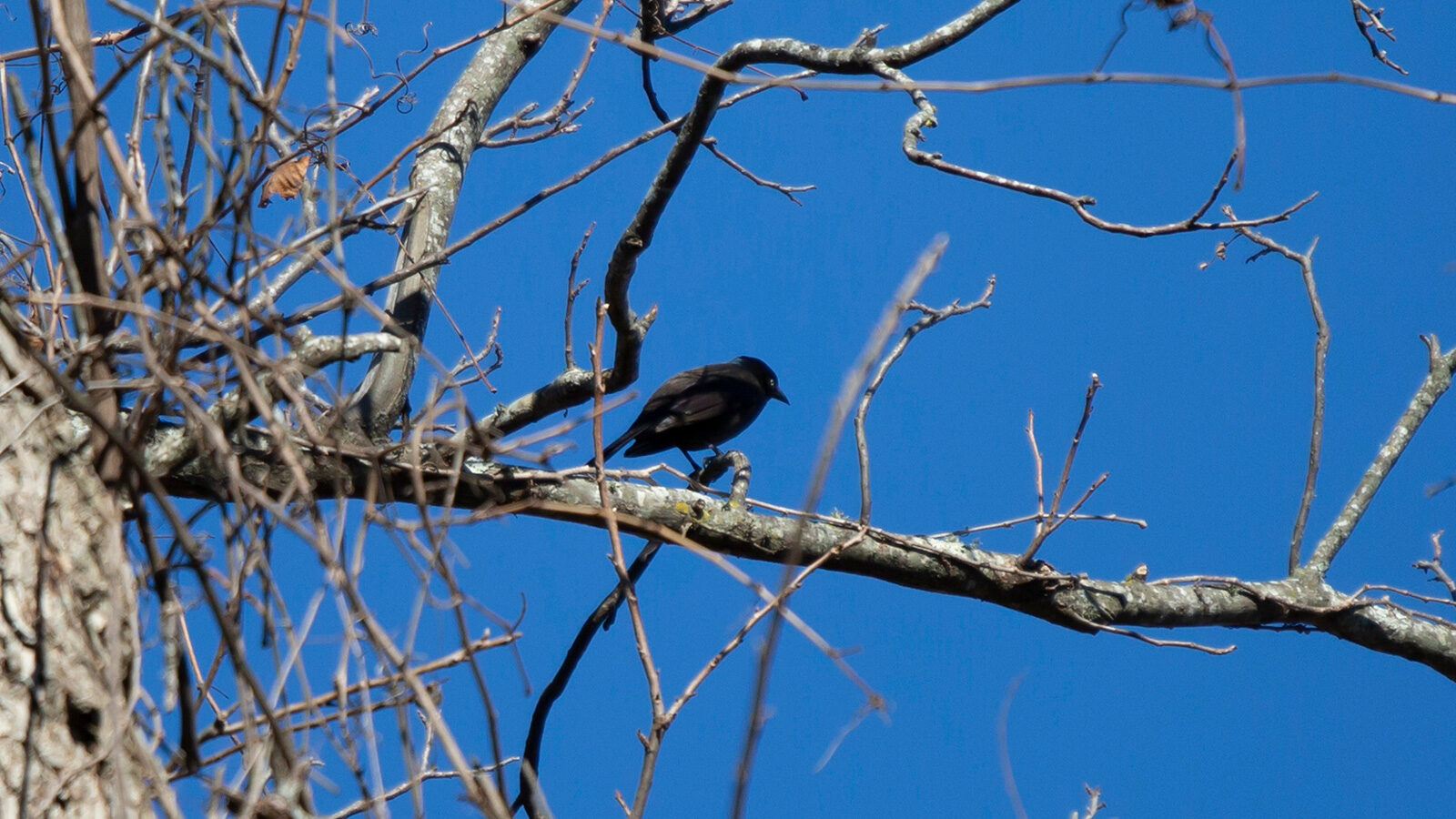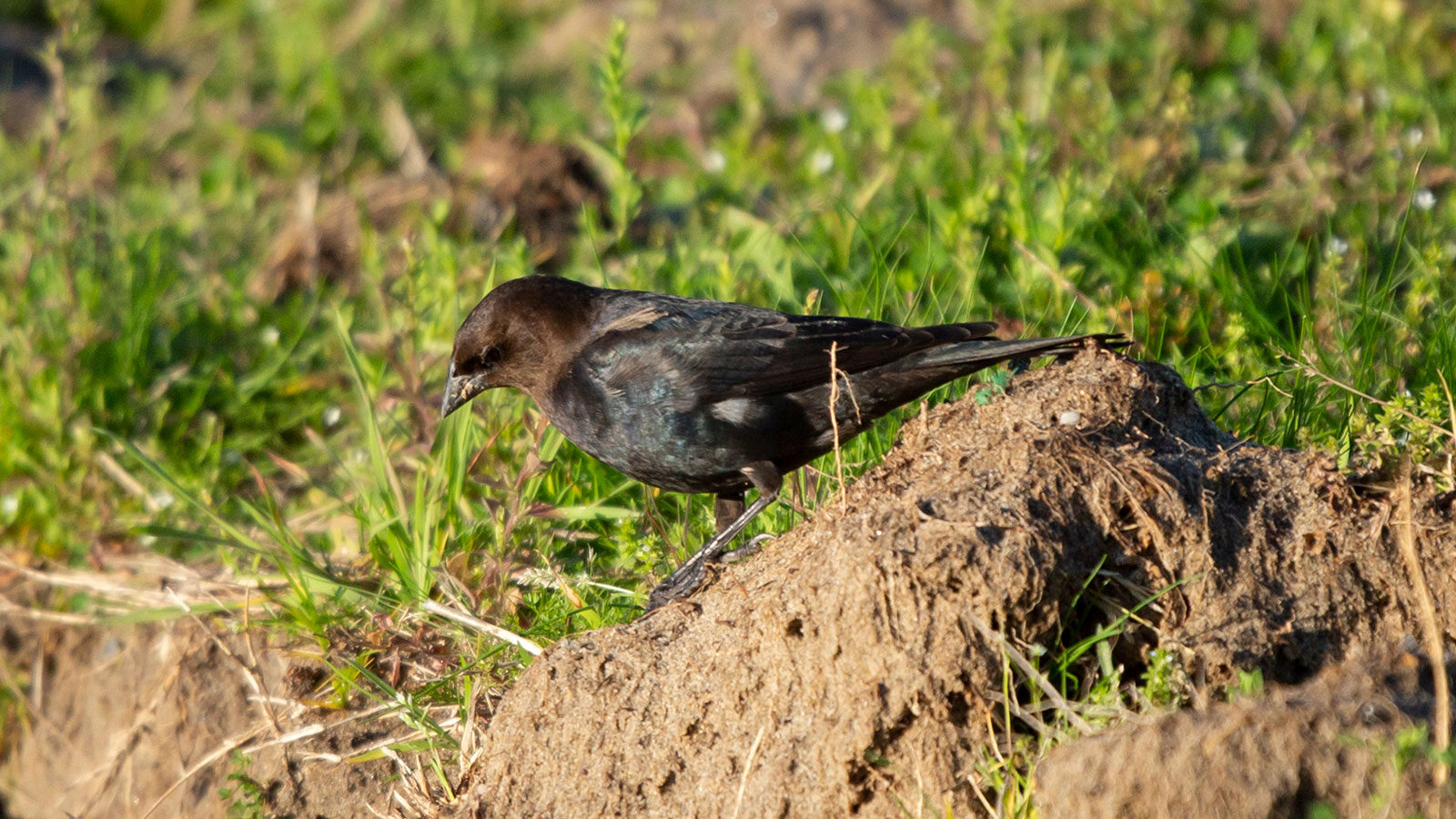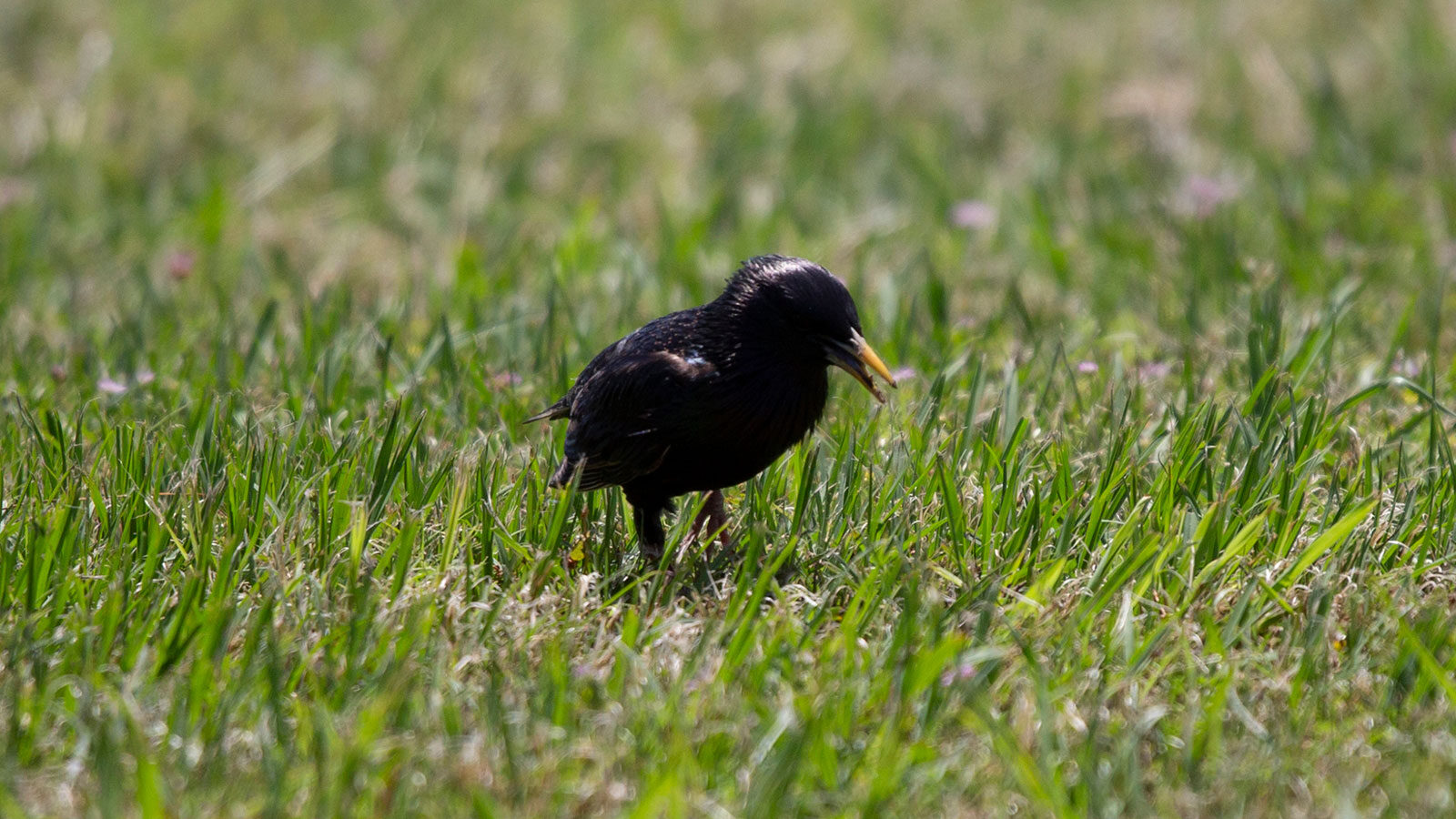
Did you know that Brewer’s blackbirds are good at pest control because they eat termites?
Brewer's Blackbirds
at
a Glance

Key Features:
Male Brewer’s blackbirds are glossy black birds with blue sheen on their heads and green sheen on their bodies. Females are brown with darker wings and tails.
Least Concern - Population Decreasing
Habitat:
Farms, forests, grasslands, cities, parks, and scrubland
nesting habits:
Brewer’s blackbirds build cup-shaped nests in colonies in shrubbery, trees, grass, cavities, or on the ground out of feces, hair, rootlets, stems, and twigs.
seasons brewer's blackbirds are active in our area:
Winter
Diet:
Grains, insects, and seeds
hunting Behavior:
Brewer’s blackbirds forage on the ground.
Commonly Confused With:
Brown-Headed Cowbirds, Common Grackles, Common Starlings, Red-Winged Blackbirds, and Rusty Blackbirds

Male Brewer’s blackbirds are often confused with male brown-headed cowbirds because both have black bodies. Brewer’s blackbirds are solid black. Male brown-headed cowbirds have brown heads.
Brewer’s blackbirds are often confused with common starlings because both are black at a distance. Brewer’s blackbirds have black beaks. Common starlings have yellow beaks.
